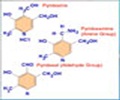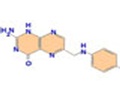Penn State nutrition researchers have published two papers that may provide a direction for investigations of the impact of vitamin A on neonatal health.

Stores of the vitamin become depleted as the fetus reaches full term, to the point where newborns are nearly depleted of vitamin A. Neonates born in developing countries are likely to have even lower amounts of vitamin A in their bodies. "The World Health Organization recommends periodic vitamin A supplements to children living in developing countries," said A. Catharine Ross, professor of nutritional sciences and Dorothy Foehr Huck Chair. "Giving large doses of vitamin A to children 6 months to 5 years old has shown to decrease mortality by 23 percent.
However, studies in children under 6 months have been inconclusive. "Ross and colleagues studied levels of vitamin A in rat pups for two weeks, from 4 days old to 18 days old, similar to neonatal age in children. Half the pups received a vitamin A supplement while the others did not receive any supplement -- serving as the control. The researchers measured the pups' rate of vitamin A metabolism by sampling various organs and found that vitamin A was used very quickly. Retinol, which is a form that vitamin A takes in the body, isn't broken down immediately and is recycled between plasma and tissues. The pups that received the supplement experienced lower rates of recycling, however they had greater uptake of vitamin A in extravascular tissues.The supplemented rats were also found to have an increased uptake of chylomicron retinyl ester -- another form that vitamin A takes in the body -- in the lungs, intestines and remaining tissue, and a decrease in retinol turnover out of the liver, compared to the unsupplemented rats, Ross and colleagues report in two recent articles published in the Journal of Lipid Research. The researchers speculate that since the neonates are born with a low vitamin A level but have a high demand for it, the uptake of retinyl ester in tissues other than the liver is an adaptive mechanism to make more vitamin A available for use.
"This research provides us with a blueprint for humans, giving us a baseline set of data, in order to let us make comparisons in the future," said Ross. "By being able to better understand infants' nutritional needs, evidence-based dietary intake recommendations could be made and infant mortality could potentially be reduced, particularly in developing countries. "Also working on this research were Libo Tan, graduate student and postdoctoral fellow in nutritional sciences; Amanda E. Wray, research technologist in nutritional sciences; and Michael H. Green, professor of nutritional sciences.
Source-Eurekalert














